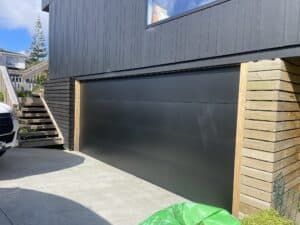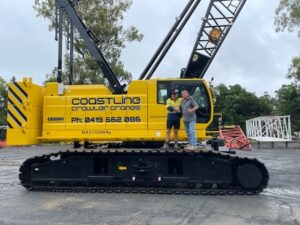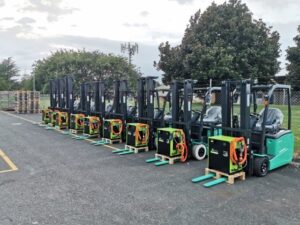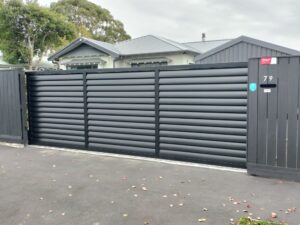Clear aligners have redefined orthodontic care, offering a near-invisible alternative to traditional metal braces. Their rise in popularity is driven by a combination of technological advancements, patient convenience, and highly effective treatment outcomes.
However, not all clear aligners are created equal. While professionally supervised options like Invisalign utilise cutting-edge materials and precise treatment planning, lower-cost, direct-to-consumer aligners present significant risks. Without professional oversight, patients may experience unpredictable tooth movement, bite misalignment, or even long-term damage.
For Aucklanders considering clear aligners, understanding the science behind their function is critical. A well-designed system ensures safe, effective tooth movement, while poorly made alternatives may compromise both oral health and treatment results.
How Do Clear Aligners Work? The Science Behind Teeth Movement
Biomechanics of Tooth Movement
Teeth do not move randomly. Orthodontic treatment relies on carefully controlled force application to shift teeth in a predictable, safe manner. Clear aligners achieve this by exerting gradual, calculated pressure on specific teeth, guiding them into their correct positions over time. Unlike traditional braces, which use brackets and wires to pull teeth into alignment, clear aligners use a series of custom-fitted trays to create steady, controlled movement.
Gradual Adjustments
Each aligner in the series is slightly different from the one before it, encouraging incremental shifts in tooth positioning. Patients typically wear a set for about one to two weeks, allowing teeth to adjust before progressing to the next stage. This method ensures consistent, predictable movement, reducing discomfort and treatment time when compared to outdated orthodontic approaches.
3D Treatment Planning
A successful clear aligner treatment begins with advanced digital scanning and 3D modelling. In a professional setting, orthodontists use high-precision imaging to create a digital map of the patient’s teeth. This data is then fed into sophisticated Artificial Intelligence-driven software, predicting how teeth will shift over time and generating a personalised sequence of aligners.
Aligners produced without such technology and orthodontic supervision carry risks. Poorly designed trays may apply uneven force, fail to correct bite issues, or cause unexpected complications, leading to expensive corrective treatment later on.
Precision Fit vs. Generic Aligners
A well-made clear aligner fits securely and exerts even pressure, ensuring predictable results. Premium brands invest in high-quality, medical-grade thermoplastics that provide durability, flexibility, and comfort. These aligners are trimmed to match a patient’s gum line, reducing irritation and improving overall wearability.
In contrast, mass-produced aligners from lower-cost providers lack the precision of custom 3D scanning and treatment planning. Many use rigid, lower-grade plastics, increasing discomfort and the risk of unintended tooth movement. Without professional monitoring, patients may find their bite worsening instead of improving—an outcome that is difficult and costly to reverse.
Choosing professionally supervised clear aligners is not just about aesthetics. It is about safety, effectiveness, and long-term oral health. For Aucklanders seeking a trusted, science-backed orthodontic solution, understanding these differences is the first step toward achieving a properly aligned, healthy smile.
The Role of 3D Scanning & Digital Treatment Planning
Orthodontic treatment has moved far beyond traditional methods. The era of messy, uncomfortable dental moulds is over. Advanced 3D scanning technology now captures precise digital impressions, ensuring accuracy while eliminating unnecessary discomfort. These high-resolution scans allow orthodontists to assess alignment, bite issues, and tooth movement with unmatched clarity.
Precision is key. The difference between a well-planned treatment and a failed one lies in how accurately a patient’s teeth are mapped at the outset. Artificial Intelligence (AI) and predictive modelling play a pivotal role in this process. Advanced software simulates tooth movement over time, ensuring that each aligner in the sequence is designed to apply the right amount of force, in the right direction, at the right time.
Without this level of precision, aligners may fit poorly, fail to correct underlying orthodontic issues, or worse—push teeth into unnatural positions. Aligners produced without high-quality 3D scanning and predictive modelling often lack the necessary refinement, leading to unpredictable movement and compromised results.
Auckland’s leading orthodontic clinics rely on cutting-edge scanning technology to ensure treatment accuracy. In-person assessments and digital scans allow for fully customised aligners, designed specifically for the patient’s teeth and gum line. This level of care and precision is not found in generic, mass-produced aligners that prioritise affordability over effectiveness.
Clear Aligner Materials: What Sets Them Apart?
All clear aligners may look similar, but the materials used in their construction make a critical difference in comfort, durability, and effectiveness. Premium aligners are designed with advanced, flexible thermoplastics, allowing for a precise yet comfortable fit. Lower-quality versions, on the other hand, rely on rigid, lower-grade plastics that lack flexibility and control.
One of the key factors in aligner effectiveness is grip. A well-engineered aligner applies controlled pressure, ensuring steady tooth movement while remaining comfortable for daily wear. Inferior materials lack this ability. They may feel loose, fail to exert the right amount of force, or cause irritation due to rough edges and poor design.
Comfort is not a luxury—it is a necessity. Poorly designed aligners can rub against the gums, cause excessive pressure on certain teeth, or even warp over time. Some aligners rely on generic thermoplastics that are prone to micro-fractures and wear, leading to discomfort and less predictable results.
Orthodontic treatment should be safe, effective, and based on proven science. The choice of material matters just as much as the technology behind it. Auckland patients deserve high-quality aligners that provide reliable results—not cheap imitations that compromise their dental health.
AI & Smart Technology in Clear Aligners
AI is transforming orthodontics, making treatment more precise and efficient. Machine learning algorithms now predict tooth movement with unprecedented accuracy. Every adjustment is mapped digitally before treatment even begins, ensuring each aligner applies the correct force to guide teeth into alignment.
Not all aligners use the same level of technology. Advanced systems incorporate SmartTrack-style AI, which continuously refines treatment plans based on patient progress. This level of customisation ensures more predictable, controlled movement, unlike generic aligner software that follows a static, one-size-fits-all approach.
Traditional orthodontic adjustments require manual intervention and periodic assessments. In contrast, AI-driven aligners can anticipate tooth movement in real time, reducing the need for constant modifications. Poorly engineered aligners lack this precision, often resulting in incorrect pressure application, discomfort, and unintended movement.
The future of orthodontics is shifting towards real-time tracking and smart aligners. Some cutting-edge systems are already integrating remote monitoring capabilities, allowing orthodontists to track patient progress digitally. This level of oversight minimises errors, optimises treatment efficiency, and ensures each patient receives an orthodontic solution backed by data—not guesswork.
Clear Aligners vs Traditional Braces: The Tech Advantage
The science behind clear aligners is designed for gradual, controlled movement, reducing discomfort while optimising precision. Each aligner applies carefully measured force, allowing for predictable shifts in tooth positioning. Unlike traditional braces, which rely on brackets and wires to pull teeth into place, clear aligners work through staged adjustments, ensuring more comfortable and accurate treatment.
Advancements in clear aligner technology have significantly reduced treatment time. In some cases, treatment with high-quality aligners is just as fast—if not faster—than metal braces. The key lies in the efficiency of force application, which has been fine-tuned by AI-driven modelling and precision-mapped aligners.
One of the most significant advantages is fewer clinic visits. Smart planning and digital monitoring have removed the need for frequent orthodontic adjustments. With clear aligners, many patients require fewer in-person checkups, making the process more convenient without compromising results. Poorly designed aligners, however, lack this level of oversight, increasing the likelihood of treatment failures and costly corrections.
The shift towards clear aligners is undeniable. More Auckland patients are choosing them over braces, driven by comfort, aesthetics, and cutting-edge technology. Orthodontic treatment is no longer confined to metal brackets and monthly tightening. With the right aligner system, patients can achieve a straighter, healthier smile—without outdated methods slowing them down.
Common Myths About Clear Aligner Technology
Misinformation about clear aligners is widespread. Many assumptions stem from mass-market aligners that prioritise affordability over quality. Separating fact from fiction is critical when choosing the right treatment.
- “All clear aligners are the same.”
No, they are not. Premium aligners use advanced materials and AI-driven treatment planning, ensuring precise movement and predictable results. Lower-quality aligners rely on inferior plastics and generic manufacturing processes that compromise effectiveness. - “Clear aligners take longer than braces.”
This depends entirely on case complexity and provider expertise. Properly designed aligners, guided by professional orthodontists, can match or even exceed the efficiency of traditional braces. Mass-produced alternatives lack this precision, often leading to delays and compromised outcomes. - “Mail-order aligners use the same technology as premium brands.”
They do not. Professionally supervised aligners involve 3D scanning, custom treatment planning, and orthodontic oversight at every stage. Mail-order kits rely on self-impressions and automated systems, increasing the risk of misalignment, bite issues, and long-term damage. - “Clear aligners only work for minor adjustments.”
With the right treatment approach, clear aligners correct complex cases, including overbites, underbites, and severe crowding. The difference lies in professional planning. Poorly designed aligners fail to apply force correctly, leading to unpredictable results and potential harm.
Choosing the Right Clear Aligner Provider in Auckland
Selecting a trusted provider is the most critical decision in clear aligner treatment. The difference between orthodontist-supervised aligners and mail-order kits is vast—one prioritises patient safety and effectiveness, while the other cuts corners at the patient’s expense.
Orthodontic-Supervised Aligners vs. Mail-Order Kits
Orthodontic treatment requires precise planning and expert oversight. Professionally supervised aligners involve detailed 3D scans, ongoing monitoring, and adjustments where necessary. Mail-order kits rely on self-impressions and remote assessments, which lack the accuracy needed for safe, controlled tooth movement.
Misaligned teeth affect more than just aesthetics. Bite misalignment can cause long-term jaw issues, headaches, and uneven tooth wear. Without professional oversight, these risks increase significantly.
What to Look for in a Clear Aligner Provider
Not all providers operate with the same level of expertise. A reputable provider should offer:
- Experienced orthodontists overseeing treatment.
- High-quality materials and custom-fitted aligners.
- Advanced 3D scanning and AI-driven treatment planning.
- Regular in-person checkups to monitor progress and adjust treatment as needed.
Why Patients Trust Professional Clear Aligner Clinics
Orthodontic care is an investment in long-term oral health. Auckland’s leading orthodontists prioritise precision, safety, and proven treatment methods. They ensure clear aligners are not just effective but also protect overall dental health.
The rise of mass-market aligners has made cheap, unsupervised treatment more accessible—but accessibility should never come at the cost of safety or effectiveness. Choosing a professional provider ensures aligners function as they should—predictably, safely, and with long-term stability in mind.
Clear Aligner Technology Delivers Real Results
Clear aligners represent one of the most significant advancements in modern orthodontics. Scanning using 3D, AI-driven treatment planning, and high-performance materials have redefined how teeth are straightened, making treatment more precise, efficient, and comfortable.
Not all aligners meet the same standards. Some rely on outdated manufacturing methods, generic plastic materials, and one-size-fits-all treatment approaches. These compromises can result in misaligned bites, uneven pressure on teeth, and long-term damage that requires corrective intervention.
Auckland patients deserve science-backed, professionally managed aligners that produce predictable results. When designed with the right technology and supervised by an orthodontist, clear aligners offer faster treatment times, better fit, and long-term stability.
Investing in a trusted, data-driven orthodontic system is a safeguard for your oral health. Cutting corners with lower-quality alternatives risks complications that can take years to correct.
Get in touch with an orthodontist in your area for expert advice on clear aligners in Auckland. A healthy, well-aligned smile begins with the right expertise, the right technology, and a commitment to precision.
Have you read these articles?
 Braces Or Clear Aligners: Which Is The Best Overbite Treatment?
Braces Or Clear Aligners: Which Is The Best Overbite Treatment?
 Invisalign vs Braces – Which Is Better for Auckland Patients?
Invisalign vs Braces – Which Is Better for Auckland Patients?
 Finding the Best Clear Aligner Providers in Auckland: A Complete Guide
Finding the Best Clear Aligner Providers in Auckland: A Complete Guide
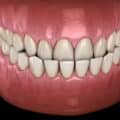 Can Invisalign Correct an Underbite? A Complete Guide
Can Invisalign Correct an Underbite? A Complete Guide
 Helpful Guide to How Christchurch Orthodontists Fix Teeth Crowding
Helpful Guide to How Christchurch Orthodontists Fix Teeth Crowding

